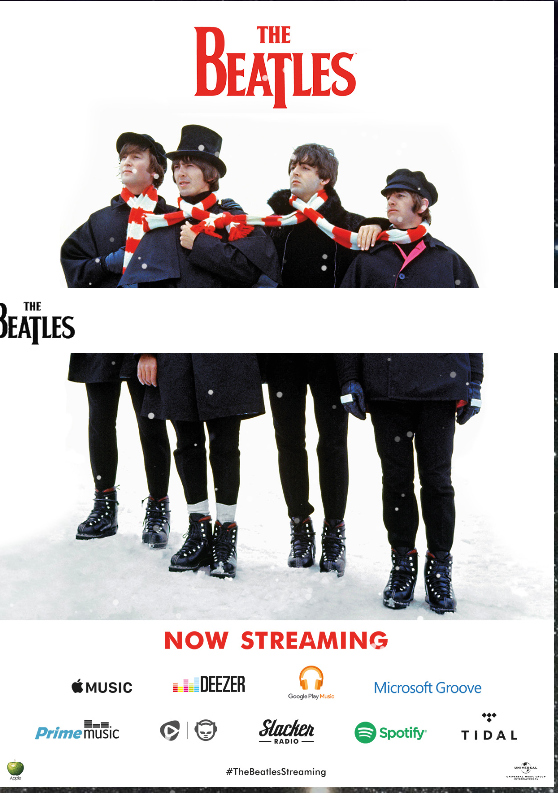In the middle of Paul McCartney celebrating a new album and Ringo Starr on the road, their shared history follows them around. But it’s not a cloud, just rays of sunlight as the Beatles’ variously progressing 50th anniversaries show them more and more to be geniuses way before their time.
Today, the 50th anniversary remix and package of “The White Album” from November 1968 was presented by Giles Martin, of the Beatles’ late producer George Martin, himself a studio whiz and begruding Beatles expert. He says he’s not one, but he is. Years ago, he told us, he informed a producer friend that he was reluctant to produce the Beatles’ Cirque du Soleil soundtrack in Las Vegas, aka “Love.”
Who would want to do that? Giles ask. The friend said, “If you don’t, I will.” Nature abhors a vacuum.
The self-effacing Giles went on to produce “Love” and then remix “Sgt Pepper” last year for its 50th anniversary. He took on “The White Album” with more apprehension because it’s 30 tracks– thirty– with hundreds of outtakes and tapes to be perused.
He also rediscovered what are called the “Esher” demos– pronounced “Eeesher”– recorded at George Harrison’s home of that name. He played several for us. They are– for me and for all Beatles fans–stunning. “They’re like MTV Unplugged,” Martin said, with a laugh, “that’s my generational reference.”
The Esher tapes are utterly amazing because they’re acoustic one off versions of “White Album” era songs, played by the Fab Four with humor and incredible professionalism. The Beatles could release the “Esher” album as its own standalone, frankly, and it would sell millions. We heard “OblaDi, Obla Da,” in the Power Plant recording studio with about 50 journalists, and there was applause at the end.
Someone asked if, when he listened to Martin’s remixes, if Paul McCartney remembered specific takes or things they’d done in the studio. “Paul McCartney is like Forrest Gump,” Martin said, meaning in a good way. “He’s done everything, you can’t imagine what his life is like, and he just keeps moving forward. He doesn’t look back.”
There are so many gifts in this 107 track package. I commented that for some reason Ringo Starr’s drumming just keeps getting better and better. “It’s the same drumming,” Giles said. “We haven’t changed it.” But new technology keeps opening up the dimensions of the recordings– and Ringo– particularly on “Happiness is a Warm Gun”– is a revelation. “He noticed that, too,” Martin said. (Note to fans– find the most recently remastered “Ticket to Ride” from 2009.)
There’s some Beatles revisionist history going on, too, maybe for the best. After the group broke up, John Lennon gave a lot of bitter interviews. At one point he described “The White Album” as the sound of a group breaking up. Over the years, Beatles common history noted the album as one put together by four separate band members. But Martin did not find that when he listened to conversations from the studio. Despite financial differences, and Ringo briefly quitting– “The White Album” comes off as a “band album,” with the guys working together happily.
“My father went to see John in 1980,” Giles said, “they hadn’t seen each other in about 8 years. He asked him, Why did you say these things? At one point John had said he’d like to re-record all the albums.” This clearly hurt George Martin. Giles said, “And John replied, I was stoned.”
So we’ll take that for what it is. A lot of “Lennon Remembers” by Jann Wenner may be inaccurate and designed to wound after a divorce. What we heard today from “The White Album”– due November 9– is going to be a revolution of sorts.

